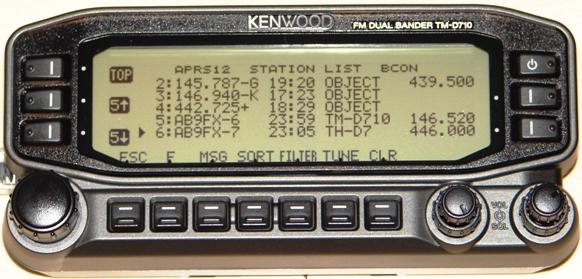
(extract from Bob Bruninga, WB4APR’s APRS website)
OVERVIEW: The Automatic Packet Reporting System was designed to support rapid, reliable exchange of information for local, tactical real-time information, events or nets. The concept, which dates back to the mid 1980’s, is that all relevant information is transmitted immediately to everyone in the net and every station captures that information for consistent and standard display to all participants. Information was refreshed redundantly but at a decaying rate so that old information was updated less frequently than new info.
Since the primary objective is consistent exchange of information between everyone, APRS established standard formats not only for the transmission of POSITION, STATUS, MESSAGES, and QUERIES, it also establishes guidelines for display so that users of different systems will still see the same consistent information displayed in a consistent manner (independent of the particular display or maping system in use). The two images below should give you an idea of the kinds of information available to the mobile operator on his APRS radio. , and on the right is the attached GPS with map display showing the location of other APRS stations.

Kenwood D710 radio showing the station list
attached GPS with map display showing the location of other APRS stations
Each station or object in the list has three more pages of information on it. The objects can show Repeater frequenceis in an area, meetings, nets, events, hamfests, echolink and IRLP nodes and frequencies, traffic speeds, accidents, emergency situations. And the attached GPS can show the location of each of these items.
THE GOAL IS COMMUNICATIONS and LOCAL INFO UPDATE, -NOT- JUST VEHICLE TRACKING!
APRS provides situational awareness to all operators of everything that is going on in his local area, whether it be Weather reporting, traveler info, Direction Finding, objects pointing to ECHOlink and IRLP, or Traffic reporting and emergency response. All of this while providing not only instantaneous operator-to-operator keyboard messaging capability for special events, but also an always-on Voice Alert backchannel between mobiles in simplex range. Think of APRS as a signalling channel to reveal ALL amateur radio resources and live activities that are in range of the operator at any instant in time.
UBIQUITOUS OPERATIONS: APRS must work everywhere to be a true resource to the mobile ham radio operator. In North America, 144.39 MHz is dedicated throughout the continent. In Europe, use 144.80 and in Australia use 145.175 MHz..
National operating rules were standardized in the 2004 time frame under the New-N Paradigm to eliminate obsolete and inefficient routing. Now, only a 2 hop WIDE2-2 path is recommended in all areasthough mobiles can use the special WIDE1-1,WIDE2-1 two-hop path that takes advantage of nearby WIDE1-1 fill-in digipeaters. See the high density areas in the map to the right. Further, the APRS channel is a resource to inform everyone of nearby ham resources in range. Please see the Local Info Initiative.
APRS GLOBAL INTERNET SYSTEM: Although APRS is a local, tactical real-time two-way communications system, all local information is injected into the APRS-IS Internet system so it can be monitored anywhere. Here is the live IGate list of over 1500 IGates that give connectivity throughout the world. Not only does this allow for global monitoring of local activity, it also allows the two-way point-to-point messaging between any two APRS users anywhere on the planet (that has an APRS infrastructure). Everything goes in so it is available to everyone on the internet, but only messages and selected position data goes back out to RF to keep the channel local and lightly loaded.
Local Live APRS Traffic in the Adelaide Metropolitan Area (from aprs.fi)
UNIVERSAL TEXT MESSAGING FOR AMATEUR RADIO: . Not only can APRS users text-message each other live, but they can also text-message with many other cross-platform media. There is an initiative to cross connect ALL consumer type hand-held wireless devices to the APRS system so that any two radio amateurs can text-message callsign-to-callsign completely independent of the type of device. They can use cell phones, blackberrys, pagers, DTMF HT’s or just about any other kind of device. See the web page: Universal Text Messaging Initiative
If you would like to know more about APRS, here are some resources you can access, or feel free to come to an AREG meeting and find out more from our members who are active on the mode today!
- aprs.org – Bob Bruninga, WB4APR
- www.tapr.org – Tuscon Amateur Packet Radio association
- aprs.fi – Online APRS Mapping

